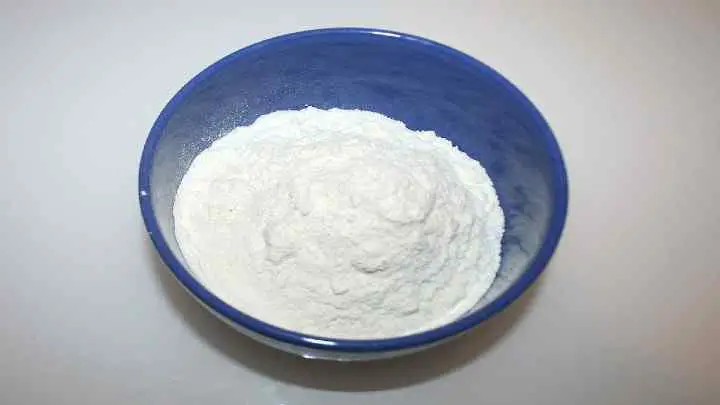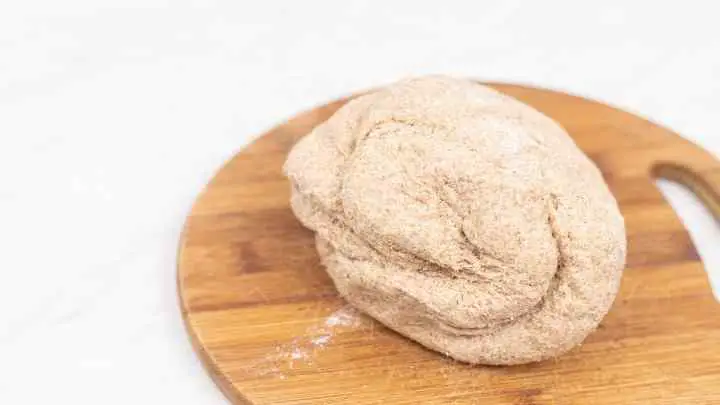Bread flour and whole wheat flour are both types of flour that are used in baking. Are you wondering whether you should use bread flour or whole wheat flour in your next batch of bread?
Even though they are both flours, they are produced in different ways and thus have different properties.
Have you ever been confused by what the difference is between bread flour and whole wheat flour? Learn their differences in this article.
Is whole wheat flour the same as bread flour?
No, whole wheat flour and bread flour are not the same.
Whole wheat flour used in making whole wheat bread contains germ and bran which makes it more difficult to produce enough gluten for elasticity, unlike bread flour.
Also, baked products made with whole grain flour like bread appear to be denser than those made using bread flour or all-purpose flour.
Bread made using bread flour is more elastic, chewy, and less dense. Bread baked using bread flour is also airier in structure while the bread baked with 100% whole wheat flour has a less airy structure.
What is bread flour?
Bread flour is a highly proteinous wheat flour specifically made to produce yeasted bread.
Bread flour differs from whole wheat flour which is milled from the whole wheat kernel as it only contains the protein-rich endosperm of the wheat.
This proteinous component which is mostly gluten is an important aspect of the bread flour and all wheat flour as it gives the loaf an elastic structure and helps it expand after leavening.

In commercial bread production, bread flour is mostly used because of its high protein content and ability to produce gluten.
What is whole wheat flour?
Whole wheat flour or whole grain flour refers to the powdery substance derived from the milling of wheat.
Unlike white flour, whole wheat flour contains the natural wheat kernel proportions of germ, endosperm, and bran.
Also, it is mostly made from hard red wheat and possesses a shorter shelf life when compared to white flour.

Because of the oil in the germ and bran, whole wheat flour has a shorter shelf life.
Products made using whole grain flour are richer in nutrients like healthy fats, protein, and dietary fiber and also denser in structure than those made using bread flour. Whole wheat flour can exist in fine or coarse forms.
Also, the commercial production of whole wheat flour is quite recent and commenced after whole wheat flour was found to have numerous health benefits as a result of its dietary fiber, bran, and germ proteins in them.
Whole wheat flour vs bread flour: what’s the difference?
The following factors differentiate whole grain flour from bread flour;
Preparation
Whole wheat flour is produced through the milling of the entire wheat kernel. This means that it contains both the germ and the bran and can also be called whole-grain flour.
Bread flour on the other hand has been refined to contain only the protein-rich endosperm of the wheat, giving it its highly elastic structure.
Appearance
Bread produced using whole wheat flour has a slightly darker color than bread made using bread flour or all-purpose flour.
Whole wheat flour (especially stone-ground wheat flour) gives the bread a coarse and grainy feel with a stronger nutty flavor than bread flour.
Structure
Bread baked using bread flour has a more elastic structure due to the high protein content in it and the presence of enough gluten. Gluten helps the bread’s structure and allows it to rise properly.
However, due to the presence of bran in whole wheat flour, despite having the same protein content, the activities of gluten in the dough become impaired. Hence, whole grain bread is not as elastic as bread made with bread flour.
SEE: The Unique Differences Between Gluten-Free and Wheat-Free
What is the nutritional value of bread flour?
Bread flour contains a considerable number of nutritional benefits.
In addition to carbohydrates, it also provides protein and vitamins that are either gotten naturally or added during the production process. Bread flour also has a low amount of saturated fatty acids and cholesterol.
A cup of bread flour contains the following nutrients;
- Calories: 455
- Carbohydrates: 95.3 g
- Protein: 12.91 g
- Fat: 1.22 g
- Fiber
- Vitamins (folate, thiamin, selenium)
Additionally, the method by which bread flour is processed plays a significant role in its nutritional benefits and functionality.
What is the nutritional value of whole wheat flour?
Whole wheat flour contains a considerable amount of carbohydrates, protein, lipids, and minerals. It also has a low amount of saturated fats, cholesterol, and total fat in general. Common nutritional values that you can find in a 100g serving of whole wheat flour include;
- Protein – 12.73g
- Carbohydrate – 69.34g
- Ash – 1.52g
- Water – 14g
- Lipid – 2.41g
Because of its high fiber content, consumption of products made using whole wheat flour may lower the risks of heart conditions or diseases and certain cancers.
Whole wheat flour is also very filling and a great source of carbohydrates and proteins. Its high fiber content also aids digestion and helps in weight management as you stay satisfied and less hungry for a longer period.
Which flour is the healthiest between whole wheat flour and bread flour?
Whole wheat flour is generally healthier than bread flour as it has higher fiber content and is a good source of minerals, vitamins, and protein.
The high fiber content in whole wheat flour promotes weight management by keeping you filled for longer and delaying hunger. It also helps digestion and proper bowel movement.
In addition, products made with whole wheat flour help manage type 2 diabetes as it is unlikely to spike blood sugar levels.
FAQs
Will bread flour work for cookies?
Yes, you can use bread flour to bake cookies. However, this will result in your cookies being chewier as bread flour contains more gluten.
You will typically be getting a more chewy and crispy cookie structure than your average cookie.
SEE: If It Is Possible to Mail Cookies
What is the difference between bread flour and all-purpose flour?
The major difference between all-purpose flour and bread flour is that bread flour has a higher protein content than all-purpose flour.
Typically, bread flour contains about 11-13% of protein and produces more gluten than all-purpose flour.
Can you use whole wheat flour for pancakes?
Yes, you can use whole wheat flour to make pancakes in place of all-purpose flour.
However, to use whole wheat flour, you have to measure a lesser quantity as it absorbs more liquid than all-purpose flour and can make your pancakes thicker and denser.
SEE: What Griddle Temp Is Best For Making Pancakes
Conclusion
The composition of wheat flour is less elastic than that of bread flour as a result of the bran or cereal germ containing insoluble dietary fiber.
Wheat flour also has oils not present in bread flour, contributing to the formation and sticking of gluten strands. As a result, wheat flour has more cohesiveness than bread flour.
Additionally, there isn’t much of a difference between bread flour and whole wheat flour.
The main reason to choose one over another is what you are using it for. If you’re making bread from scratch, whole wheat should be your only choice if you want something truly healthy.
However, if getting your bread fixed is more important than sticking to your diet for the moment and you can’t find whole-grain flour, don’t feel bad about settling for what you can get.
That being said though, most bread should at least have half whole grain flour in them if you want something healthy and not too simple or bland.
If you suffer from gluten sensitivity and bread flour or whole wheat flour are not healthy flour choices, there are suitable alternatives. Check out gluten-free flour alternatives you can use to bake your bread.
I hope you found this article helpful. Thanks for reading.







